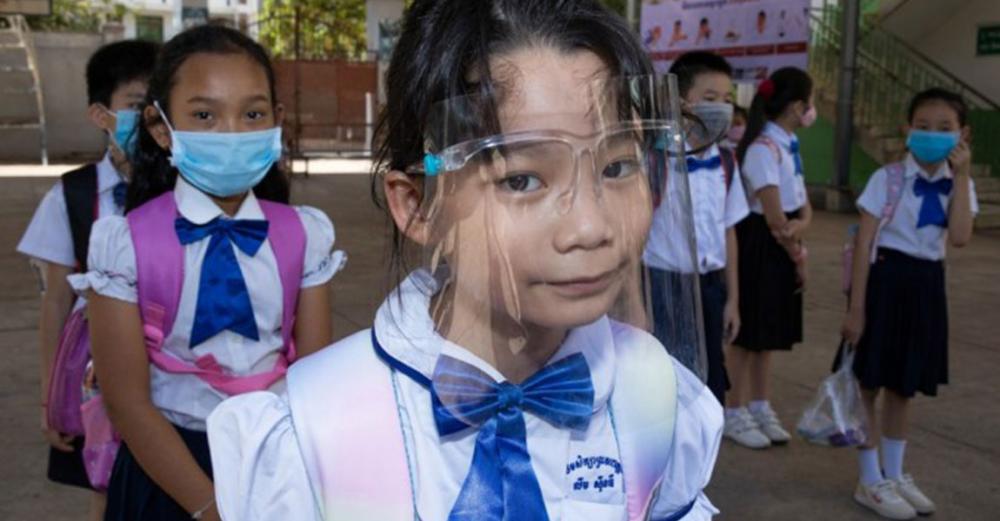Just Earth News | @justearthnews | 18 Sep 2020

New York: More research is needed into factors that increase the risk of severe COVID-19 disease among children and adolescents, the head of the UN World Health Organization (WHO) has said, adding that while children may have largely been spared many of the most severe effects, they have suffered in other ways.
Joining the heads of the UN Children’s Fund (UNICEF) and the UN Educational, Scientific and Cultural Organization (UNESCO), at a press conference on Tuesday, WHO Director-General Tedros Adhanom Ghebreyesus outlined that since the start of the COVID pandemic, understanding its effects on children has been a priority.
“Nine months into the pandemic, many questions remain, but we are starting to have a clearer picture. We know that children and adolescents can be infected and can infect others”, he said.
“We know that this virus can kill children, but that children tend to have a milder infection and there are very few severe cases and deaths from COVID-19 among children and adolescents.”
In addition, the potential long-term health effects in those who have been infected remains unknown. According to WHO data, less than 10 per cent of reported cases and less than 0.2 per cent of deaths are in people under the age of 20. However, additional research is needed into the factors that put children and adolescents at an increased risk.
Referring to closure of schools around the world, which has hit millions of children, impacting not only their education but also a range of other important services, the WHO Director-General said that the decision to close schools should be a last resort, temporary and only at a local level in areas with intense transmission.
Keeping classrooms open, 'a job for all of us'
The time during which schools are closed should be used for putting in place measures to prevent and respond to transmission when schools reopen.
“Keeping children safe and at school is not a job for schools alone, or governments alone or families alone. It’s a job for all of us, working together,” added Mr. Tedros.
“With the right combination of measures, we can keep our kids safe and teach them that health and education are two of the most precious commodities in life,” he added.
Guidance on reopening schools, while keeping children and communities safe
Although children have largely been spared many of the most severe health effects of the virus, they have suffered in other ways, said Director-General Tedros, adding that closure of schools hit millions of children globally.
Given different situations among countries: some, where schools have opened and others, where they have not, UNESCO, UNICEF and WHO, issued updated guidance on school-related public health measures in the context of COVID-19.
Based on latest scientific evidence, the guidance provides practical advice for schools in areas with no cases, sporadic cases, clusters of cases or community transmission. They were developed with input from the Technical Advisory Group of Experts on Educational Institutions and COVID-19, established by the three UN agencies in June.
Schools provide critical, diverse services
Audrey Azoulay, UNESCO Director-General, also highlighted the importance of school, not only for teaching, but also for providing health, protection and – at times – nutrition services.
“The longer schools remain closed, the more damaging the consequences, especially for children from more disadvantaged backgrounds … therefore, supporting safe reopening of schools must be a priority for us all”, she said.
In addition to safely reopening schools, attention must focus on ensuring that no one is left behind, Ms. Azoulay added, cautioning that in some countries, children are missing from classes, amid fears that many – especially girls – may not ever return to schools.
Alongside, ensuring flow of information and adequate communication between teachers, school administrators and families; and defining new rules and protocols, including on roles of and trainings for teachers, managing school schedules, revising learning content, and providing remedial support for learning losses are equally important, she said.
“When we deal with education, the decisions we make today will impact tomorrow’s world,” said the UNESCO Director-General.
A global education emergency
However, with half the global student population still unable to return to schools, and almost a third of the world’s pupils unable to access remote learning, the situation is “nothing short of a global education emergency”, said Henrietta Fore, UNICEF Executive Director.
“We know that closing schools for prolonged periods of time can have devastating consequences for children,” she added, outlining their increased exposure risk of physical, sexual, or emotional violence.
The situation is even more concerning given the results from a recent UNICEF survey which found that almost a fourth of the 158 countries questioned, on their school reopening plans, had not set a date to allow schoolchildren back to the classrooms.
“For the most marginalized, missing out on school – even if only for a few weeks – can lead to negative outcomes that last a lifetime,” warned Ms. Fore.
She called on governments to prioritize reopening schools, when restrictions are lifted, and to focus on all the things that children need – learning, protection, and physical and mental health – and ensure the best interest of every child is put first.
And when governments decide to keep schools closed, they must scale up remote learning opportunities for all children, especially the most marginalized.
“Find innovative ways – including online, TV and radio – to keep children learning, no matter what”, stressed Ms. Fore.